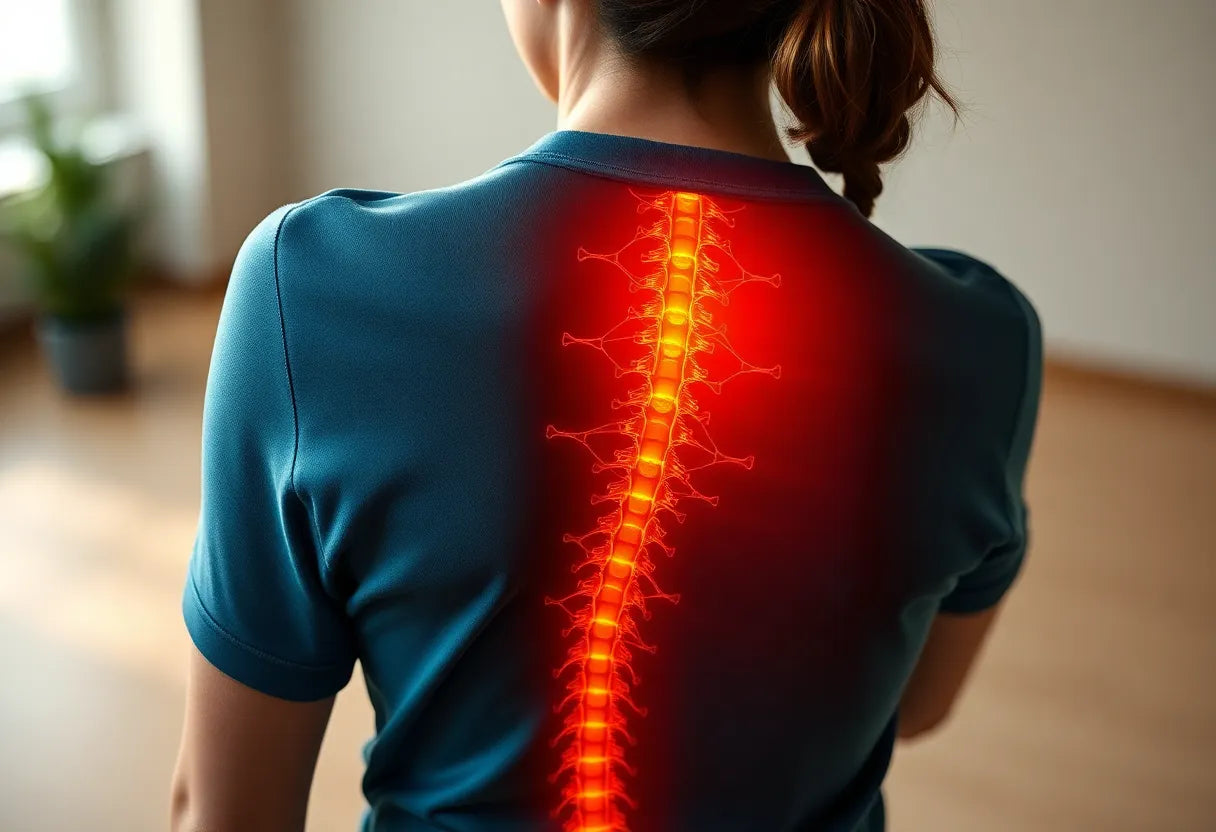Understanding the pain in the sciatic nerve is crucial for anyone experiencing discomfort that radiates from the lower back down through the leg. This condition, commonly referred to as sciatica, arises when the sciatic nerve—the longest nerve in the body—becomes irritated or compressed. The symptoms can vary, but they often include sharp, burning pain that travels along the nerve's path, as well as numbness, tingling, and even muscle weakness in severe cases. For many, these symptoms can disrupt daily activities and significantly impact quality of life.
Common causes of sciatic nerve pain
Sciatica is most frequently caused by conditions that affect the spine. Herniated discs, for example, occur when the soft center of a spinal disc pushes through its tougher exterior, potentially pressing on the nerve roots. Spinal stenosis, a narrowing of the spaces within the spine, can also lead to nerve compression. Additionally, bone spurs—bony projections that develop along the edges of bones—can contribute to the problem by exerting pressure on the nerve.
Several risk factors can increase the likelihood of developing sciatica. Age-related changes in the spine, obesity, and a sedentary lifestyle are common contributors. Occupations that require heavy lifting or prolonged sitting can also elevate risk, making it essential for individuals in these roles to take preventive measures.
The importance of early intervention
Addressing sciatic nerve pain early is vital to prevent it from becoming a chronic issue. Quick intervention can help alleviate symptoms and reduce the risk of complications, such as permanent nerve damage. Early treatment often involves a combination of self-care strategies and medical interventions, which can provide significant relief and improve overall function.
In this blog, we aim to equip you with practical and effective solutions to manage and relieve sciatic nerve pain. From understanding the root causes to exploring various treatment options, we will guide you through the steps necessary to regain control over your comfort and mobility. By taking proactive steps, you can mitigate the impact of sciatica and enhance your quality of life.
Conservative self-management techniques for sciatic nerve pain
Managing pain in the sciatic nerve often begins with conservative self-management strategies. These methods focus on balancing rest and activity, which is crucial for maintaining mobility and reducing stiffness. While brief rest periods can be beneficial, extended inactivity might exacerbate symptoms. Therefore, engaging in gentle movements and exercises is recommended to keep the muscles flexible and supportive.
Cold and heat therapy
Cold and heat therapy are effective initial treatments for sciatica. During the first 48 to 72 hours, applying ice packs can help reduce inflammation and numb the area, providing immediate relief. After this period, transitioning to heat therapy can be beneficial. Heat helps relax tight muscles and improves blood circulation, which can alleviate pain and promote healing.
Stretching and physical therapy
Incorporating specific stretching exercises is vital for targeting sciatic nerve relief. Exercises such as hamstring stretches and pelvic tilts can help alleviate pressure on the nerve. Physical therapy is another valuable component, as it not only aids in pain reduction but also strengthens the muscles that support the spine. This can improve overall mobility and prevent future flare-ups.

Lumbar support belt
Stabilizes and relieves lower back pain; ideal for sciatica and herniated discs.
Over-the-counter medications
For many individuals, over-the-counter medications offer significant relief from sciatic pain. Nonsteroidal anti-inflammatory drugs (NSAIDs) like ibuprofen and naproxen are commonly used to reduce inflammation and alleviate pain. While acetaminophen can also be used, it is less effective for nerve pain specifically. It's essential to follow dosage recommendations and consult a healthcare professional if symptoms persist.
Lifestyle modifications for sciatica relief
Adopting lifestyle modifications can make a substantial difference in managing sciatic nerve pain. Ergonomic adjustments, such as maintaining proper posture and using supportive seating, are crucial. Avoiding heavy lifting and incorporating regular, gentle exercise into your routine can also help manage pain and prevent future episodes. These changes can enhance the effectiveness of other treatments and contribute to long-term relief.

Men's Posture Shirt™ - Black
Patented technology shirt helps relieve back and neck pain while supporting posture.
Medical and interventional treatments for sciatica
When conservative methods do not provide adequate relief, medical and interventional treatments may be necessary. Prescription medications, such as muscle relaxants and anti-seizure drugs, can be prescribed for more severe pain. These medications work by reducing muscle spasms and nerve pain, respectively.
Steroid injections
Corticosteroid injections are another option for managing acute inflammation associated with sciatica. These injections are typically administered under imaging guidance to ensure precision. They work by reducing swelling around the nerve roots, providing temporary relief. However, due to potential side effects, their use is generally limited to a few times a year.
Exploring alternative therapies
Alternative therapies, such as acupuncture, chiropractic adjustments, and massage therapy, can serve as adjunct treatments for sciatic nerve pain. These therapies aim to alleviate pain and improve function through different mechanisms. While evidence varies, many individuals find these approaches beneficial as part of a comprehensive treatment plan.
Advanced physical therapies
For persistent cases, advanced physical therapies like spinal decompression and anti-gravity treadmills may be considered. These technologies aim to reduce pressure on the sciatic nerve and improve mobility. By incorporating these advanced options, patients can often find relief when other treatments have been insufficient.
In summary, managing pain in the sciatic nerve involves a combination of self-care strategies and medical interventions. By understanding and implementing these techniques, individuals can effectively manage their symptoms and improve their quality of life. Always consult with a healthcare professional to tailor a treatment plan that best suits your needs.
Surgical options for severe sciatic nerve pain
In cases where conservative and medical treatments fail to alleviate sciatic nerve pain, surgical intervention may be necessary. Surgery is typically considered when symptoms are severe, such as significant muscle weakness, loss of bladder or bowel control, or persistent pain that does not respond to other treatments.
Discectomy and microdiscectomy
One of the most common surgical procedures for sciatica is discectomy or microdiscectomy. This involves removing the portion of a herniated disc that is pressing on the sciatic nerve. Microdiscectomy is a minimally invasive procedure that uses smaller incisions and specialized instruments, resulting in quicker recovery times and less postoperative discomfort.
Laminectomy
Laminectomy is another surgical option, particularly for patients with spinal stenosis. This procedure involves removing part of the vertebra, called the lamina, to relieve pressure on the spinal cord or nerves. By creating more space, laminectomy can effectively reduce nerve compression and alleviate pain.
When to consider surgery
Surgery should be considered when conservative treatments have been exhausted and severe symptoms persist. Key indicators include significant muscle weakness, loss of bladder or bowel control, or pain that severely limits daily activities and quality of life. Consulting with a healthcare professional is essential to determine the most appropriate course of action.
Practical tips for daily management
For those managing sciatic nerve pain, adopting daily habits that support spinal health can be beneficial. Here are some practical tips:
- Use ergonomic aids like specialized chairs and pillows to maintain proper spinal alignment.
- Incorporate regular stretching and strengthening exercises into your routine.
- Practice good posture, especially when sitting for extended periods.
- Avoid heavy lifting and sudden twisting movements.
- Engage in low-impact activities such as walking or swimming to maintain mobility.
Conclusion
Managing sciatic nerve pain effectively requires a holistic approach that combines self-care strategies, medical treatments, and lifestyle adjustments. By understanding the various treatment options and implementing practical tips for daily management, individuals can significantly improve their comfort and mobility. Always consult healthcare professionals for personalized advice and to ensure the best outcomes.
Frequently Asked Questions
What are the first signs of sciatica?
The initial signs of sciatica often include sharp, burning pain that radiates from the lower back down one leg. Other symptoms may include numbness, tingling, and muscle weakness. If these symptoms persist or worsen, it is important to seek medical attention.
Can sciatica heal on its own?
In many cases, sciatica can improve with time and conservative treatment. Natural recovery may take a few weeks to a few months, depending on the underlying cause and individual factors. Engaging in appropriate self-care and seeking medical advice can facilitate healing.
What exercises help relieve sciatic nerve pain?
Effective exercises for relieving sciatic nerve pain include hamstring stretches, pelvic tilts, and gentle yoga poses like the pigeon pose. These exercises help reduce pressure on the nerve and improve flexibility. Always consult a healthcare provider before starting a new exercise regimen.
When should I consider surgery for sciatica?
Surgery should be considered if conservative treatments fail to provide relief and if symptoms such as significant muscle weakness, loss of bladder or bowel control, or severe pain persist. A healthcare professional can help determine if surgery is necessary.
How do ergonomic aids help with sciatica?
Ergonomic aids, such as specialized chairs and pillows, help maintain proper spinal alignment and reduce pressure on the sciatic nerve. These products can alleviate pain and prevent further discomfort by supporting the body's natural posture.
Källor
- Tylenol. "Sciatica Pain Relief." Tylenol.com.
- OrthoMaryland. "Spine Care: Sciatica." OrthoMaryland.net.
- Hospital for Special Surgery. "Sciatica Conditions and Treatments." HSS.edu.
- Yale Medicine. "Sciatica." YaleMedicine.org.
- WebMD. "Sciatica Symptoms." WebMD.com.
- Mayo Clinic. "Sciatica: Symptoms and Causes." MayoClinic.org.
- Cleveland Clinic. "Sciatica." ClevelandClinic.org.
- Healthdirect. "Sciatica." Healthdirect.gov.au.


















